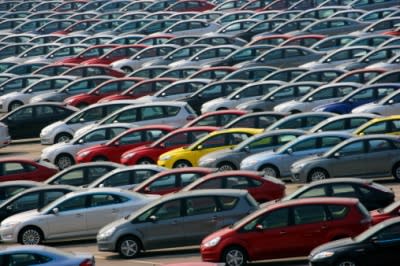The Growth in U.S. Motor Fuel Consumption

Gasoline and diesel fuel consumption in the United States has fallen in the past few years for a variety of reasons. High prices, improved fuel economy in new cars, fewer miles driven and ride-sharing have all contributed. But how big is the difference compared to, say, 1970, when gasoline pump prices were well below $1 a gallon?
New research from the University of Michigan tries to quantify what is happening with fuel consumption in the U.S. and to offer an estimate of what further reductions in consumption we might expect based on three parameters.
The study examined three factors that contribute to fuel consumption: fuel economy of the entire fleet of light vehicles on U.S. roads, the distance these cars traveled and the load they carried. The data comes from the U.S. Department of Transportation for the 40 years between 1970 and 2010.
The distance traveled has increased by 155% while the amount of fuel used per 100 kilometers has dropped by 40%. Taking into account vehicle loads, the amount of fuel consumed has risen by 53% in the 40 years to 2010.
A notable point the study makes is the impact on fuel consumption based on improvements in vehicle fuel economy. The 14.5 million new cars and light trucks sold in the U.S. in 2012 represent just 6% of the entire U.S. fleet on the road. Thus, if each of those vehicles demonstrates an 18% improvement in miles per gallon, the reduction in fuel consumption totals about 1%. At that rate, it will take a very long time to cut decisively into consumption growth, especially if miles driven continues to increase.
Where then can we expect to get the largest impact on fuel consumption? Assuming 20% improvements in fleet fuel economy, miles driven and loads, the largest impact comes from driving less. The correspondence is 1-to-1 - a 20% decrease in miles driven is equal to a 20% reduction in fuel consumption. Fleet fuel economy yields an 18% decrease in fuel consumption and higher vehicle loads (more carpooling) yields a 14% increase.
A conclusion? Higher prices for gasoline will further reduce the amount of fuel consumed. That is sure to be popular don't you think?
The study was supported by several sponsors, including General Motors Co. (NYSE: GM), a U.S. division of Honda Motor Co. Ltd. (NYSE: HMC), a division of Toyota Motor Corp. (NYSE: TM), Nissan, Volkswagen, Michelin and others, and the report is available here.
Filed under: 24/7 Wall St. Wire, Autos, Oil & Gas, Research Tagged: featured, GM, HMC, TM

